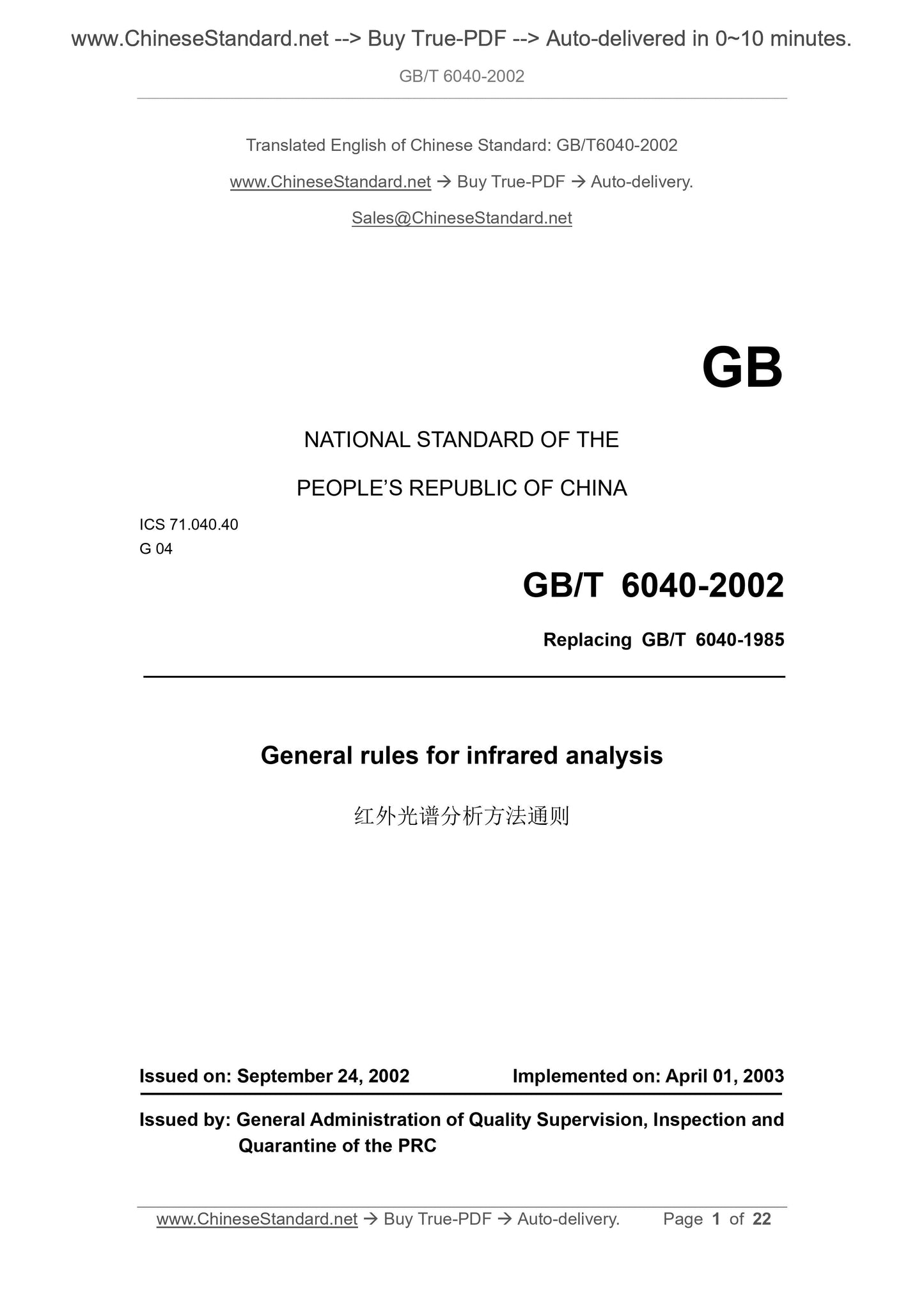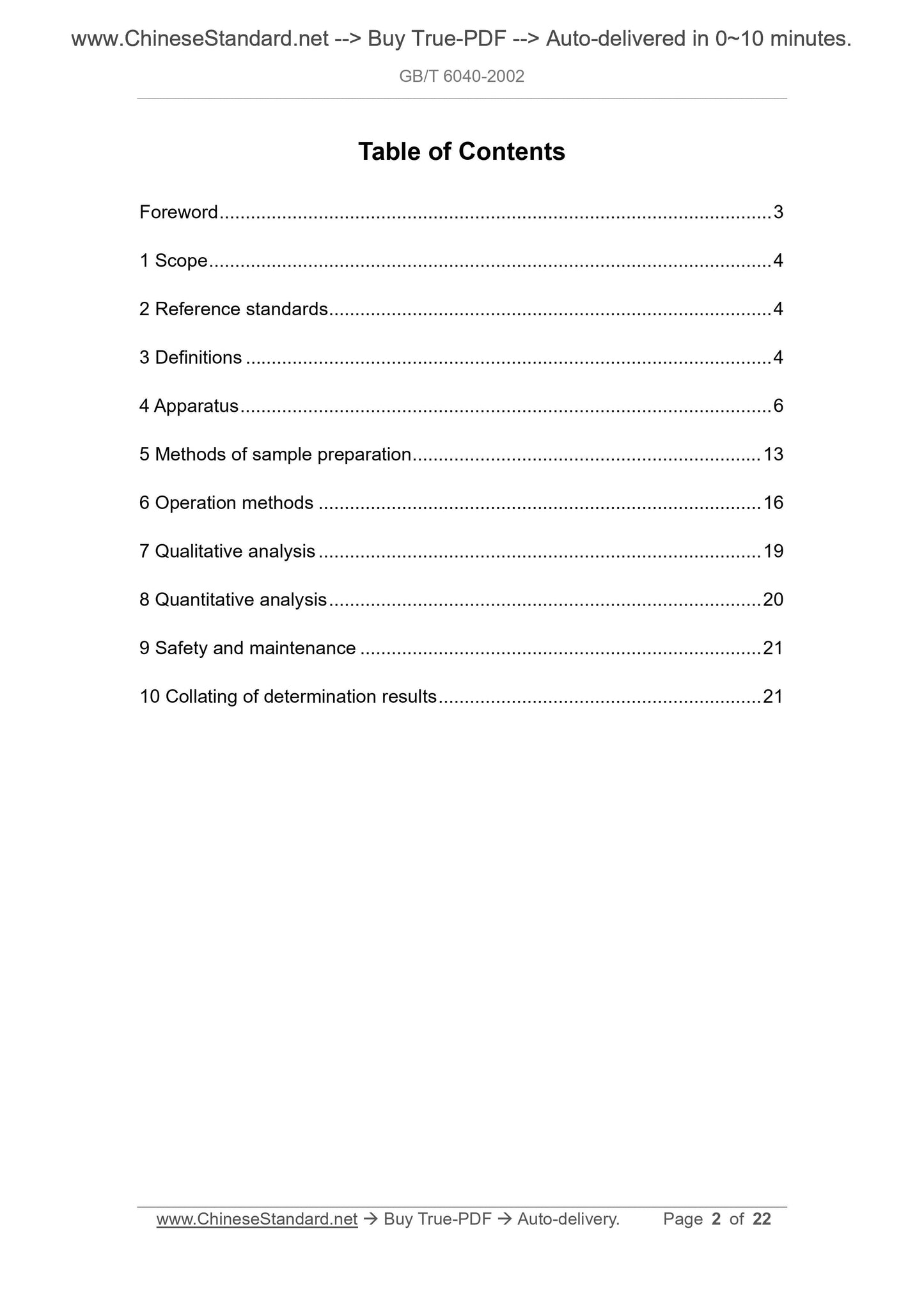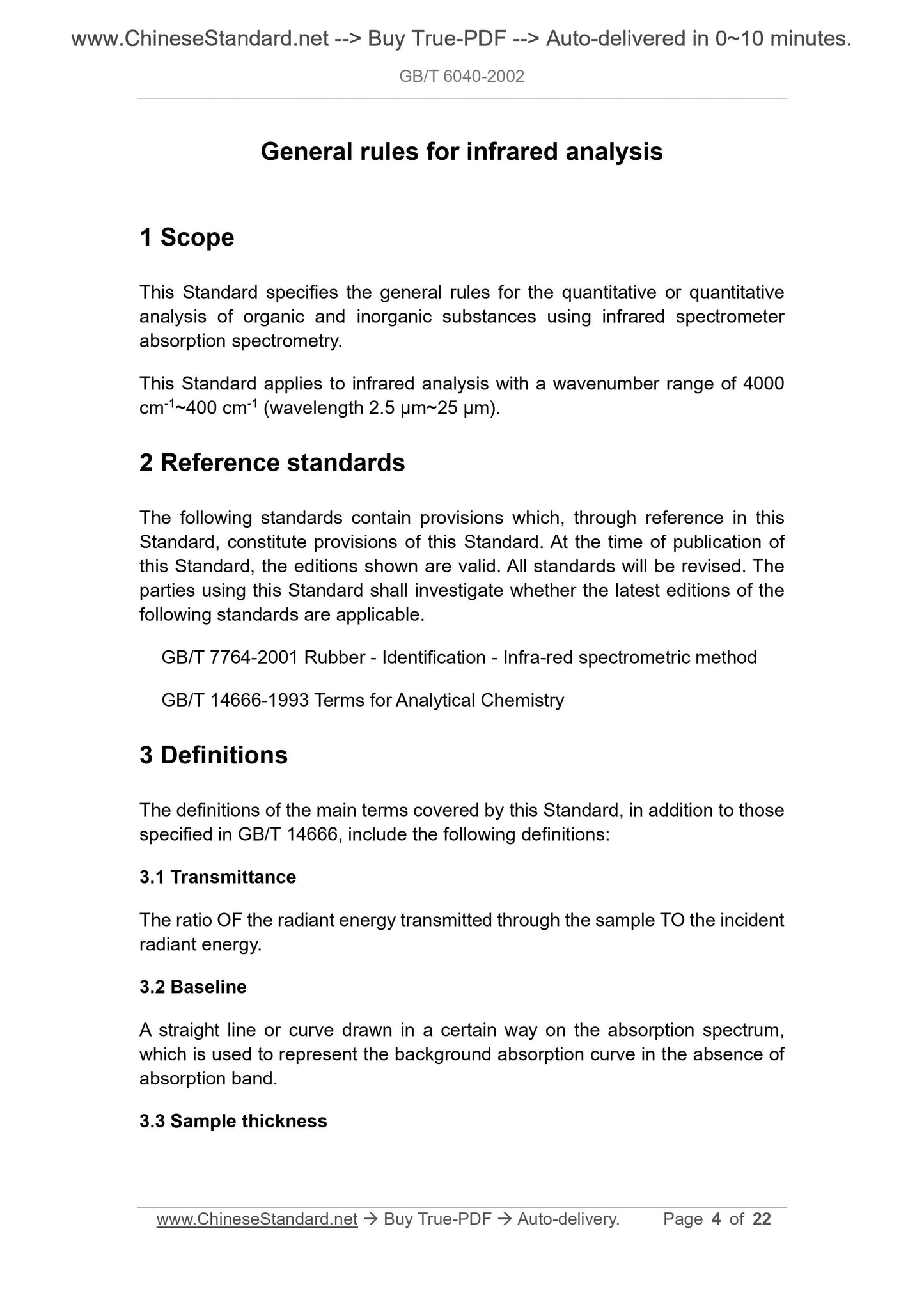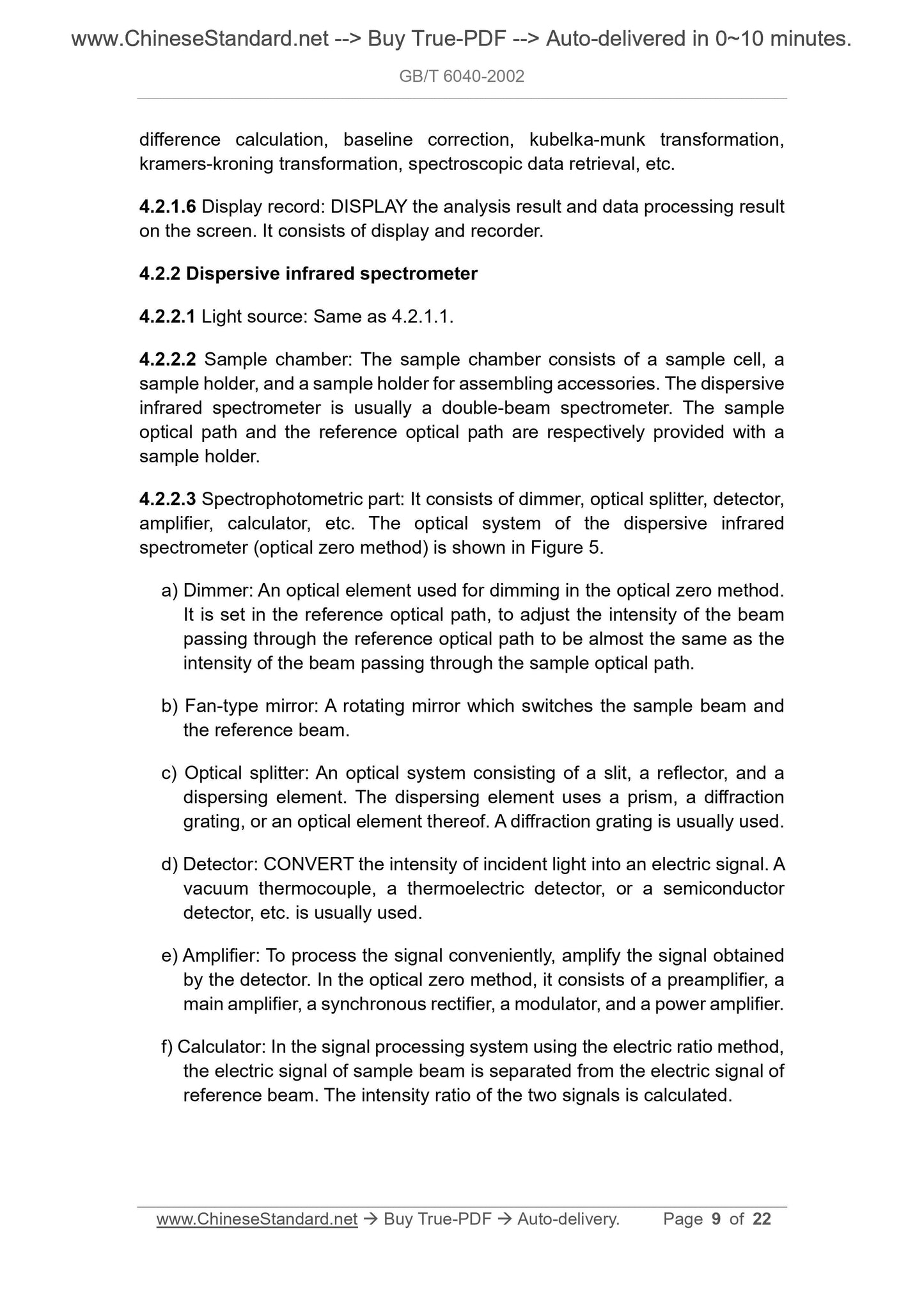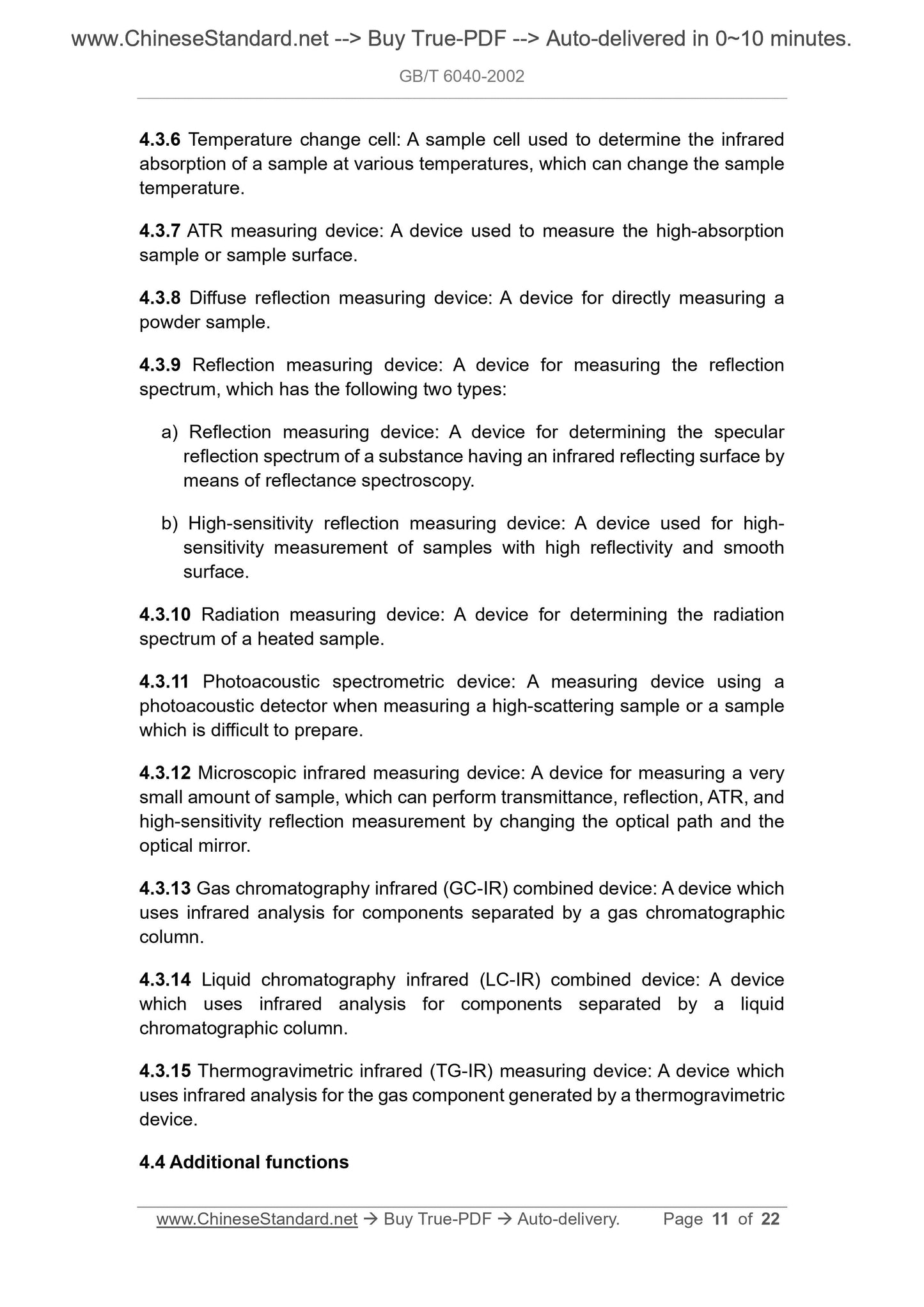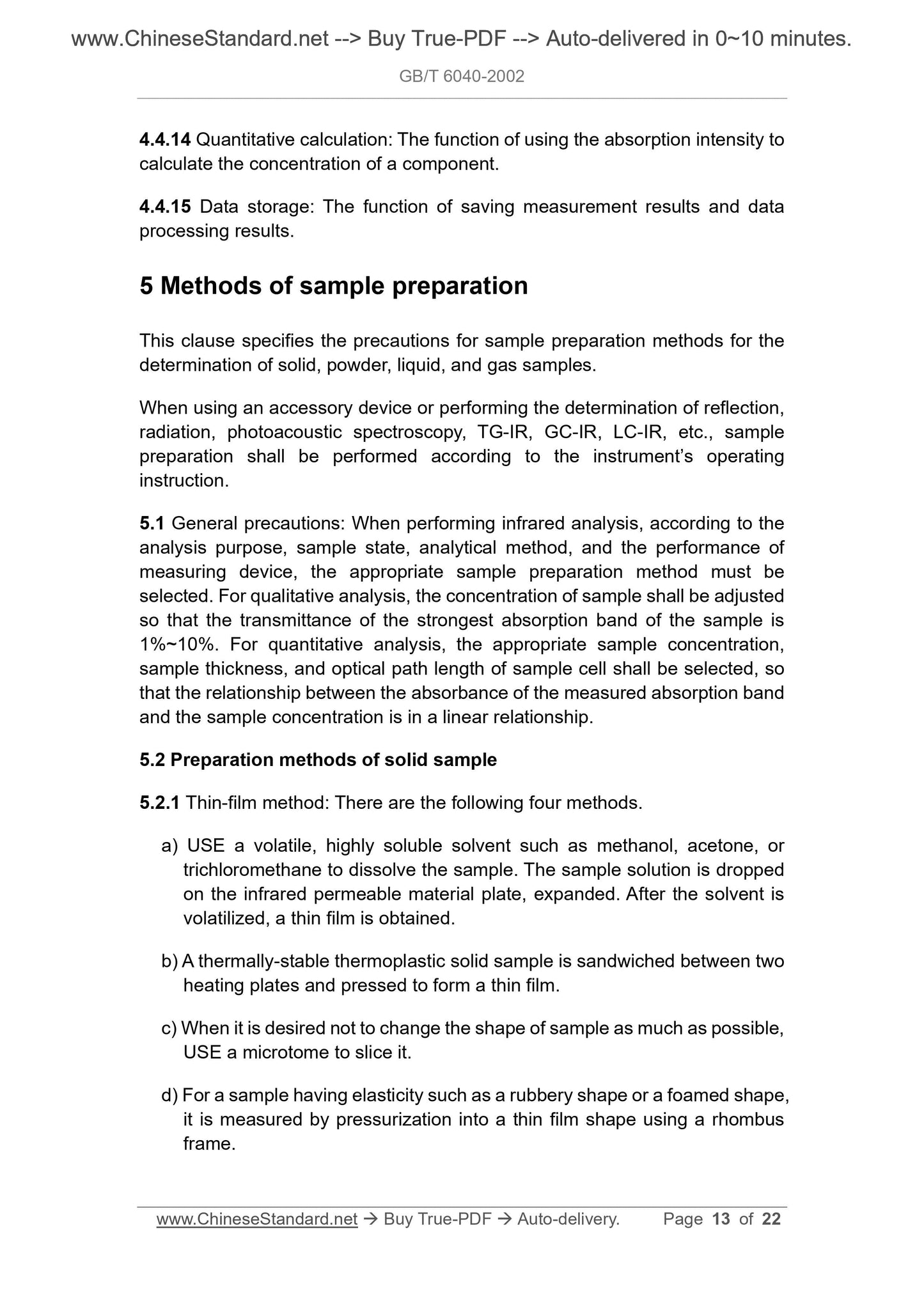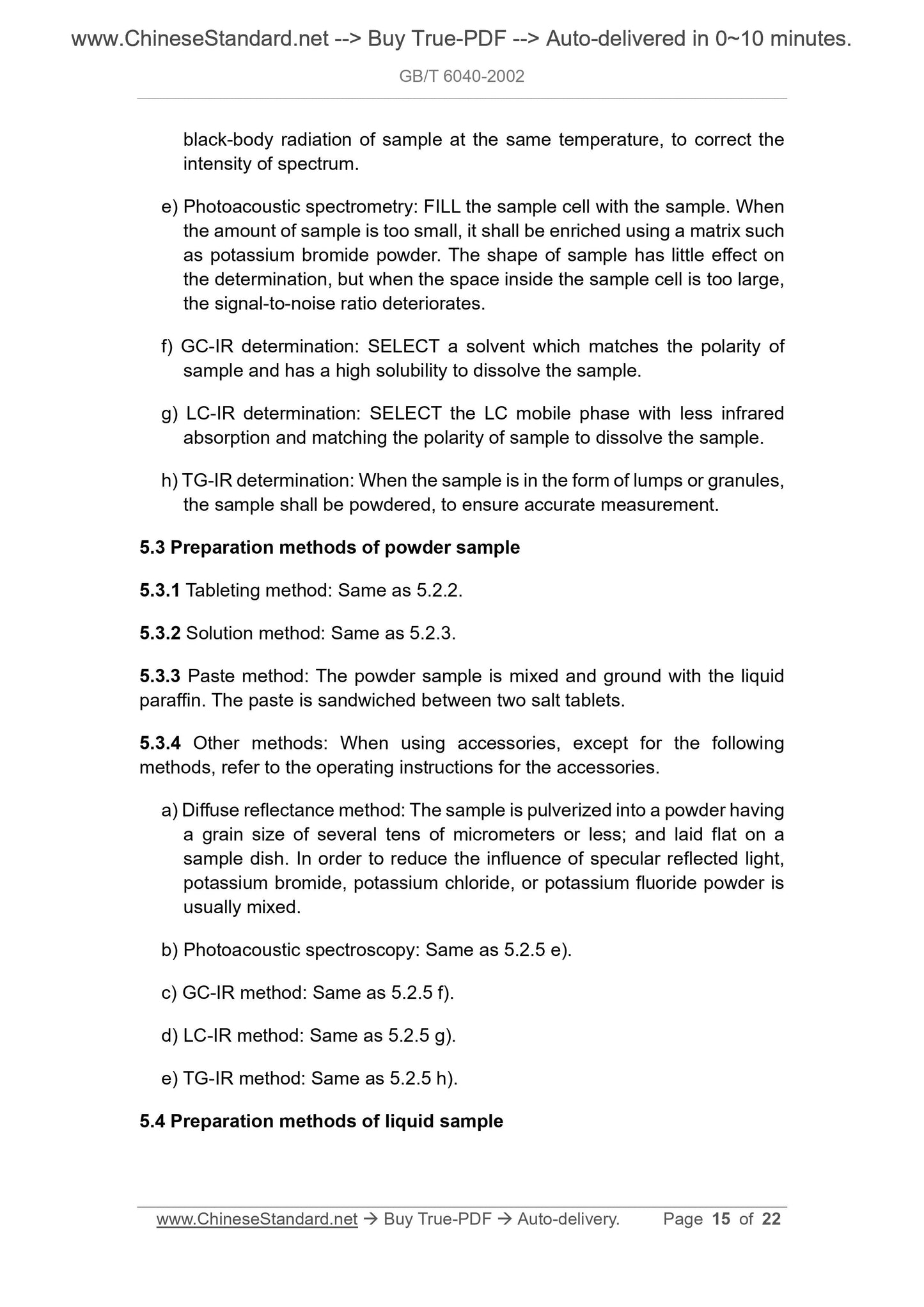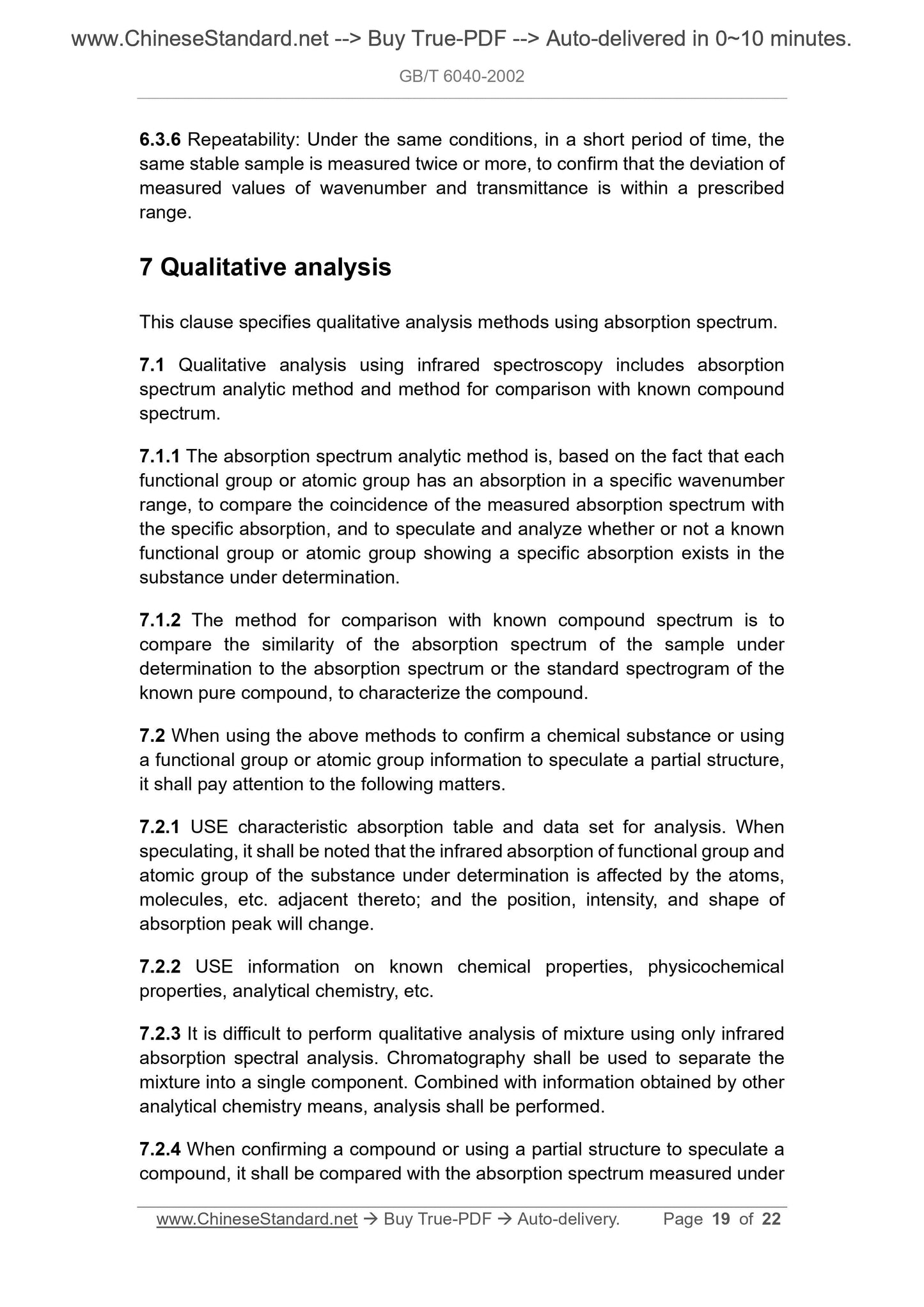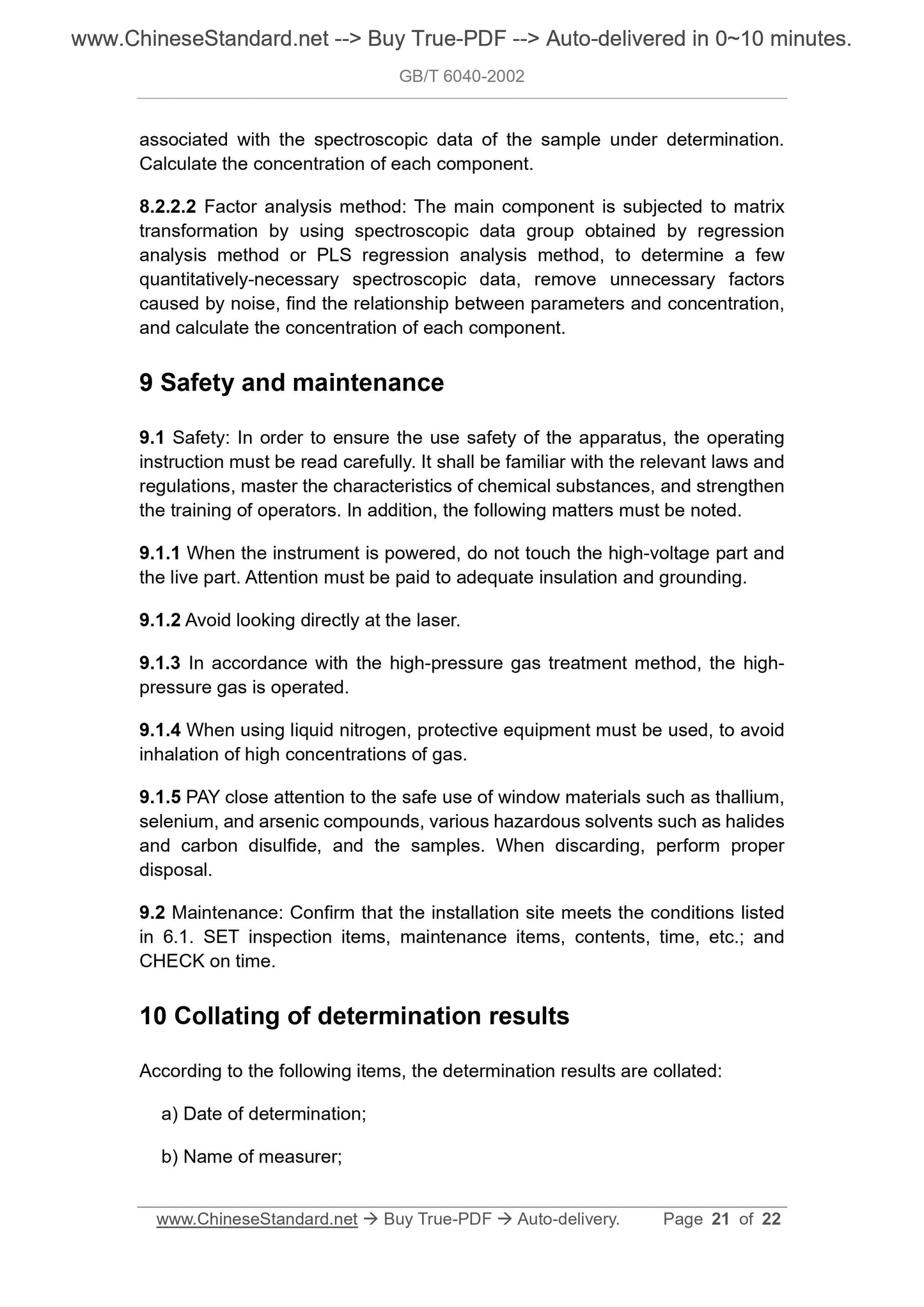1
/
of
9
www.ChineseStandard.us -- Field Test Asia Pte. Ltd.
GB/T 6040-2002 English PDF (GB/T6040-2002)
GB/T 6040-2002 English PDF (GB/T6040-2002)
Regular price
$150.00
Regular price
Sale price
$150.00
Unit price
/
per
Shipping calculated at checkout.
Couldn't load pickup availability
GB/T 6040-2002: General rules for infrared analysis
Delivery: 9 seconds. Download (and Email) true-PDF + Invoice.Get Quotation: Click GB/T 6040-2002 (Self-service in 1-minute)
Newer / historical versions: GB/T 6040-2002
Preview True-PDF
Scope
This Standard specifies the general rules for the quantitative or quantitativeanalysis of organic and inorganic substances using infrared spectrometer
absorption spectrometry.
This Standard applies to infrared analysis with a wavenumber range of 4000
cm-1~400 cm-1 (wavelength 2.5 μm~25 μm).
Basic Data
| Standard ID | GB/T 6040-2002 (GB/T6040-2002) |
| Description (Translated English) | General rules for infrared analysis |
| Sector / Industry | National Standard (Recommended) |
| Classification of Chinese Standard | G04 |
| Classification of International Standard | 71.040.40 |
| Word Count Estimation | 13,151 |
| Date of Issue | 2002-09-24 |
| Date of Implementation | 2003-04-01 |
| Older Standard (superseded by this standard) | GB/T 6040-1985 |
| Quoted Standard | GB/T 7764-2001; GB/T 14666-1993 |
| Adopted Standard | JIS K0117-2000; MOD |
| Issuing agency(ies) | General Administration of Quality Supervision, Inspection and Quarantine of the People Republic of China |
| Summary | This standard specifies: absorption spectroscopy with infrared spectroscopy legal or quantitative analysis of organic and inorganic materials General rules. This standard applies to: the wave number range of 4000cm-, ~ 400cm-1 (wavelength of 2. 5��m-25��m) infrared spectroscopy. |
Share
